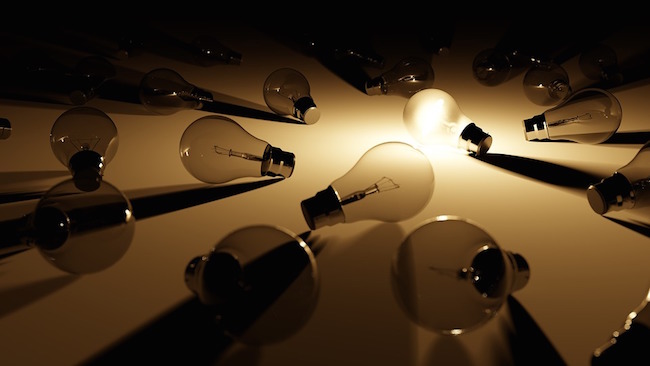Making Light by M.E. for Survival Blog
Artificial light is useful for extending working time beyond sunset, for providing comfort in the long dark hours of winter, and for finding one’s way in the night. Without electricity or batteries, solar cells or wind up flashlights, lamps and candles can be made just as they have been for thousands of years.
The cave paintings of the Upper Paleolithic were done by the light of lamps that used a lump of animal fat as fuel and lichen, moss, or juniper twigs as wicks. The light of these crude lamps was sufficient to produce some of the earliest known works of art in pitch-black caves. Some of these lamps were merely rocks with slight, natural hollows in them, others were carved from soft stone to form handles for carrying and bowls for the fat and wick. The carved bowl lamps are not dissimilar to lamps of pottery or tin used into the 19th century in frontier America. (I own a copy of one of these, called a Brown Betty.) As the wick burns, the fat melts and the liquid is drawn up the wick to provide fuel for the flame. The problem with these lamps is when the fuel runs out, the wick will continue to burn in an uncontrolled manner, destroying the wick and creating a fire hazard. Later, far superior designs addressed this problem, although the open bowl style of lamp can still be found today.
The ancient Egyptians and other Mediterranean cultures had a better design, a better fuel, and a better wick. These lamps, made of glazed pottery or metal, run a fiber wick through a narrow opening that snuffs out the flame when the wick burns down and keeps it from creating an uncontrolled blaze once the fuel is depleted. Oil, a far superior fuel to fat, can be added through the hole in the top of the lamp while the flame is still burning allowing for nearly continuous operation. The olive oil used in these lamps is an especially desirable fuel as it burns without smoke or odor. Anyone who has ever burned tallow candles or rushes (porous reeds soaked in animal fat) can understand the appeal of a less fragrant fuel such as plant oil, especially in closed in spaces.
LIGHT FROM THE SEA
In oceangoing cultures, whale oil came to be used for lamps, but this had the disadvantages of being dangerous to harvest and not especially bright when burned. For this reason, whale oil lamps usually had two wicks (I have one with three wicks) to produce more light from a single reservoir. Other fish oils, more easily harvested, have also been used. All had a strong odor when burned. The end of the American Civil War saw the introduction and spread across the country of kerosene lamps. Kerosene provides a superior quality of light compared to most oils and is less explosive that the briefly popular camphine, a combination of turpentine and grain alcohol. Camphine burned with a very bright white light, but required a specialized lamp with a strong draw to burn properly (occasionally antique shops will label a camphine lamp as a whale oil lamp because it has two wicks, but if the wick nipples are quite long and angled away from one another, that is a camphine lamp).
While kerosene is superior to its predecessors, it is not easy to produce at home, is derived from petrochemicals which may one day be difficult to access, and, when aerosolized, is explosive. It can produce an unpleasant smell as well, and if the wick is not tended, may smoke and produce soot. Having said all that, kerosene provides bright and reliable light when used correctly in a well-maintained lantern. Propane has a similar issue with being derived from petrochemicals, but is currently readily available. Methane can be produced from animal manure and other home-generated sources, but a certain amount infrastructure (biogas generator) is required, and the risk of explosion remains an issue. Propane and methane are both useful for cooking as well as lighting if a source can be assured and the proper equipment is available and maintained.




